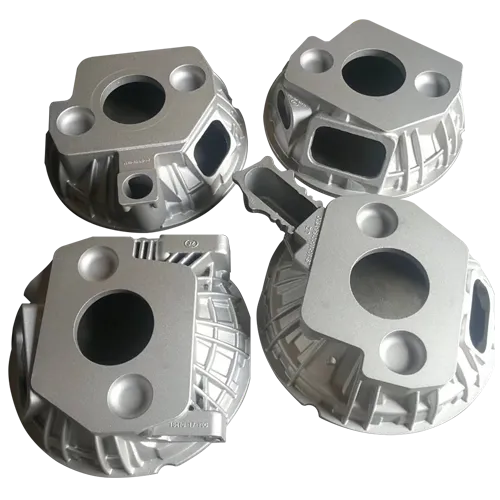Mobile:+86-311-808-126-83
Email:info@ydcastings.com
sand casting process step by step
Sand Casting Process Step by Step
Sand casting is a widely used method for producing complex metal parts by forming a mold from sand. This technique is cherished for its versatility and cost-effectiveness, especially in industrial applications. This article will take you through the sand casting process step by step, highlighting each phase while providing insights into the intricacies of this age-old yet efficient method.
Step 1 Pattern Making
The first step in the sand casting process is creating a pattern. A pattern is a replica of the object to be cast and is typically made from materials like wood, metal, or plastic. Patterns can be single-piece or multipart, depending on the complexity and size of the part. The pattern is designed with allowances for shrinkage, draft, and finishing, ensuring that the final product matches the desired specifications. The choice of pattern material and design is critical, as it affects the quality of the mold and, ultimately, the casting.
Step 2 Preparing the Mold
Once the pattern is ready, the next step involves preparing the mold. This is done by compacting sand around the pattern. The sand used in this process is typically a mixture of silica sand, clay, and water, creating a strong yet pliable medium. This sand mix is packed around the pattern with considerable pressure to ensure it holds the shape and detail. After the mold halves are formed, the pattern is removed, leaving a cavity that matches its shape.
Step 3 Core Making
In many cases, the cast part requires internal features that cannot be formed by the mold alone. Cores, typically made from a similar sand mixture but with a different binder, are used to create these internal cavities. Cores can be placed inside the mold before the two halves are joined, allowing for the creation of intricate internal geometries, such as passages or hollow sections. Cores are crucial in designs that demand complex internal features.
Step 4 Joining the Mold Halves
With the individual mold halves and cores prepared, the next step is to assemble the mold. The two halves of the mold are aligned and joined together securely, ensuring that they fit perfectly to prevent any leakage of molten metal. Proper alignment is vital to achieving a smooth and accurate final product. Sometimes, pins or keys are utilized to maintain alignment and communicate the exact positioning of the mold sections to facilitate the pouring process.
sand casting process step by step

Step 5 Pouring the Metal
The heart of the sand casting process is the pouring of molten metal into the mold. The metal is melted in a furnace and then carefully poured into the prepared mold cavity. The pouring must be done steadily and without interruption to prevent defects, such as air pockets or cold shuts. As the molten metal fills the mold, it takes the shape of the cavity created by the pattern and cores. Careful control of the pouring temperature and speed is necessary to avoid issues such as oxidation or contamination.
Step 6 Cooling and Solidification
Once poured, the molten metal enters a cooling phase where it solidifies within the mold. This process can take several minutes to hours, depending on the size and thickness of the casting. Mold materials, particularly sand, allow for some heat dissipation, facilitating a controlled cooling rate. Proper cooling is important, as it affects the mechanical properties and surface finish of the final product. If the cooling is too rapid, it can lead to cracks or warps in the casting.
Step 7 Mold Removal
After the metal has completely cooled and solidified, the next step is to remove the mold. This is often done by breaking the sand mold apart. Depending on the design and materials used, this can be a simple process that involves hand tools or machinery for larger parts. Care must be taken to avoid damaging the casting during this stage.
Step 8 Finishing
The final step of the sand casting process is finishing. This includes cleaning the casting to remove any remaining sand, excess metal (flash), and burrs. Surface treatments, machining, and other finishing processes may be employed to achieve the desired surface quality and dimensional accuracy. The casting is inspected for any defects such as voids or cracks.
Conclusion
In summary, the sand casting process is a sophisticated yet straightforward method for producing a variety of metal components. By following the steps outlined above, manufacturers can efficiently create high-quality castings tailored to various industrial applications. With continuous advancements in materials and techniques, sand casting remains a relevant and valuable method in modern manufacturing.
-
Why Should You Invest in Superior Pump Castings for Your Equipment?NewsJun.09,2025
-
Unlock Performance Potential with Stainless Impellers and Aluminum End CapsNewsJun.09,2025
-
Revolutionize Your Machinery with Superior Cast Iron and Aluminum ComponentsNewsJun.09,2025
-
Revolutionize Fluid Dynamics with Premium Pump ComponentsNewsJun.09,2025
-
Optimizing Industrial Systems with Essential Valve ComponentsNewsJun.09,2025
-
Elevate Grid Efficiency with High-Precision Power CastingsNewsJun.09,2025











